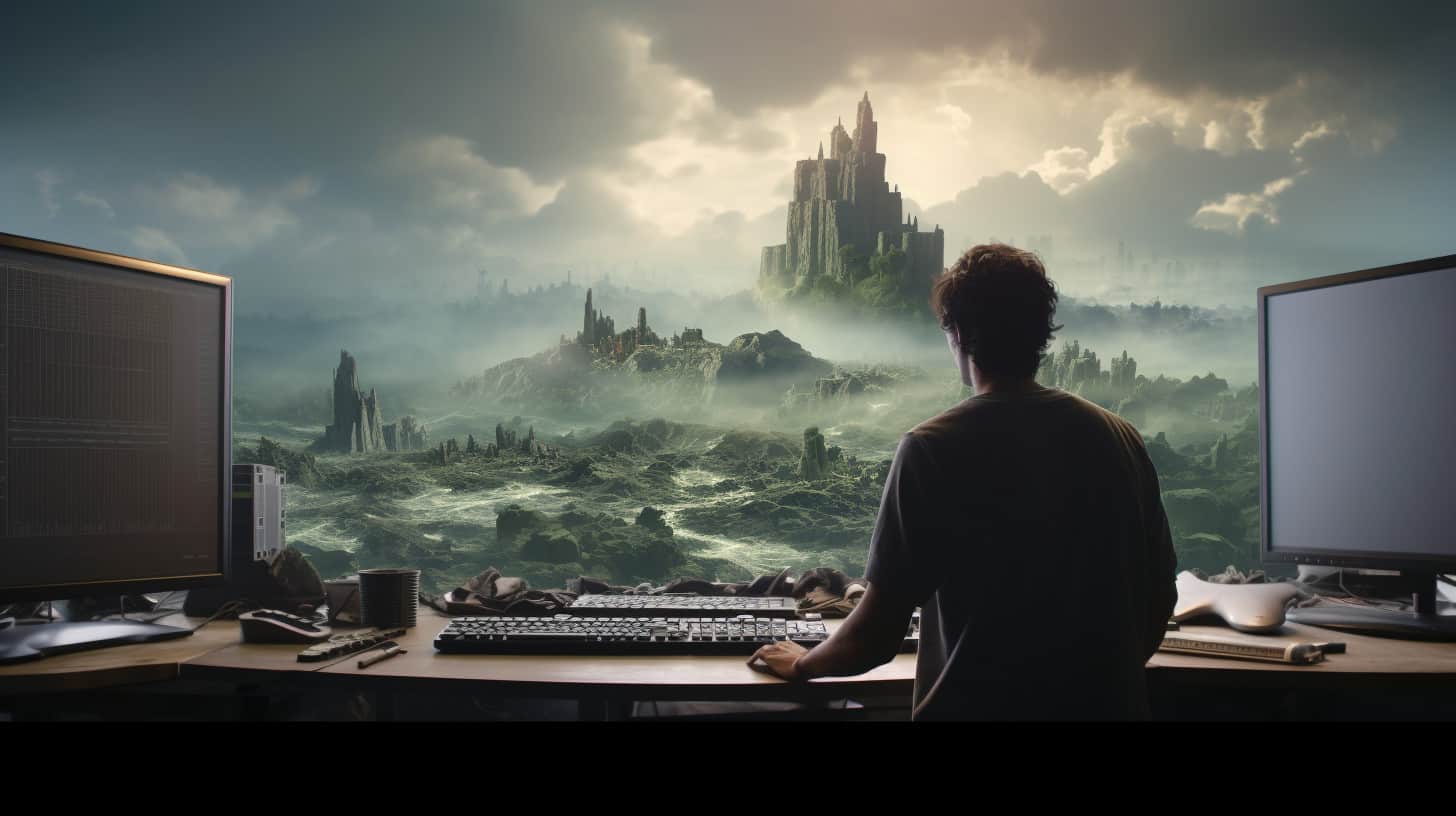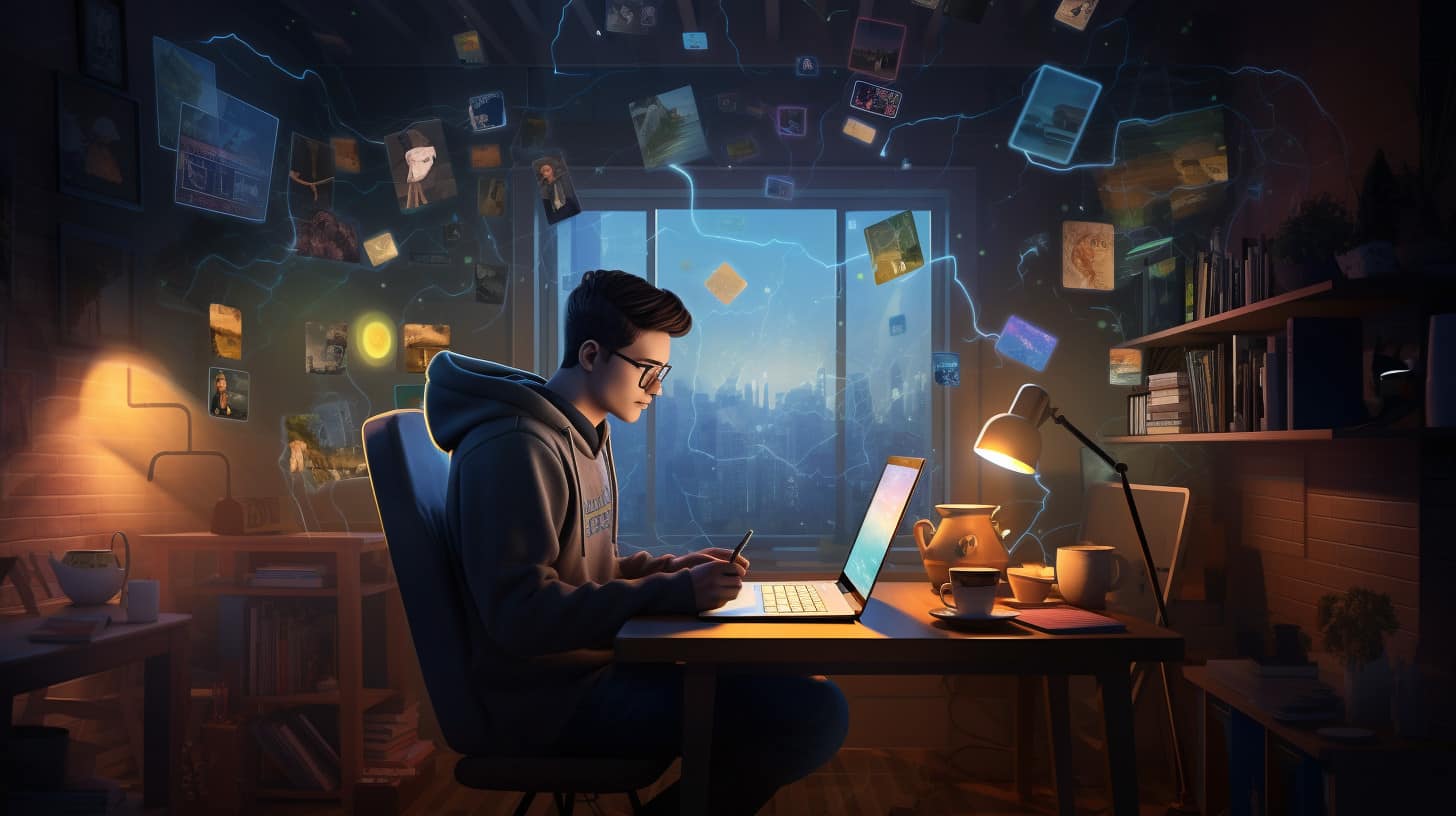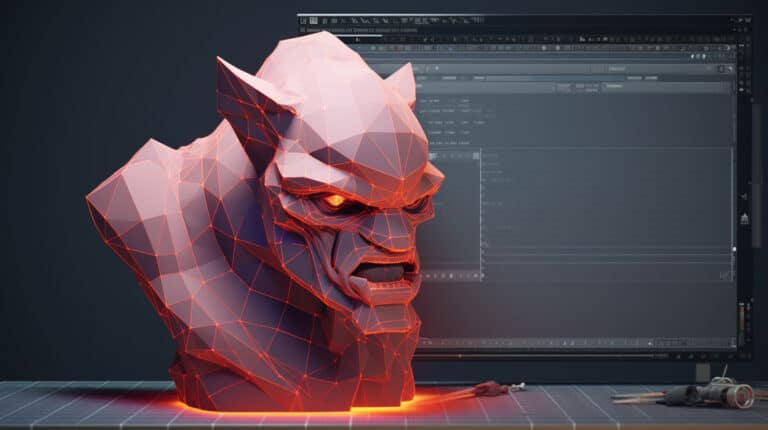Learning VFX at Home: Mastering Visual Effects Independently
Are you fascinated by the incredible visual effects you see in movies and TV shows? The rise of VFX has sparked a high demand for skilled professionals in this field.
Now, you may be wondering if it’s possible to learn VFX from the comfort of your own home. Well, the answer is a resounding yes! Learning VFX from the comfort of your own home offers numerous benefits.
Not only can you acquire valuable skills at your own pace, but you also have the flexibility to fit your learning around your schedule.
However, there are challenges to be aware of as well. In this article, we will explore the advantages and obstacles of learning VFX at home and provide you with useful tips to make your journey a successful one.
Key Points:
- Learning VFX at home is a viable option due to advancements in technology and the availability of online resources and communities.
- Strong technical skills, creativity, attention to detail, and problem-solving abilities are essential for mastering VFX.
- Overcoming challenges in learning VFX at home can be achieved by creating a designated workspace, establishing a daily routine, seeking guidance from online communities, and attending virtual conferences and workshops.
- Building an impressive VFX portfolio is crucial for showcasing skills and experience, and joining online VFX communities can provide networking opportunities and valuable feedback for growth.
Introduction
The rise of visual effects (VFX)
By learning VFX at home, you can tap into the booming industry of visual effects and create stunning digital imagery.
The rise of VFX has been nothing short of remarkable. With advancements in technology and the growing demand for high-quality visual effects in films, television shows, and advertisements, the industry has experienced exponential growth.
Visual effects have become an integral part of storytelling and have the power to transport audiences to unimaginable worlds. From creating breathtaking landscapes to bringing fantastical creatures to life, VFX artists have revolutionized the way stories are told on screen.
As the demand for visual effects continues to rise, learning VFX at home can provide you with the skills and knowledge needed to enter this exciting field and become a part of its ever-evolving landscape.
The demand for VFX skills
To meet the growing demand for VFX skills, you can learn the art of visual effects from the comfort of your own home. As the demand for VFX continues to rise, acquiring these skills can open up a world of opportunities. Here are some reasons why the demand for VFX skills is on the rise:
- The film industry relies heavily on VFX to create stunning visuals and bring imagination to life.
- Advertising agencies use VFX to captivate audiences and create memorable campaigns.
- Video game companies incorporate VFX to enhance gameplay and create immersive experiences.
- Virtual reality and augmented reality technologies require skilled VFX artists to create realistic and interactive environments.
- The demand for VFX skills extends beyond entertainment, with industries like architecture and product design seeking professionals who can create realistic visualizations.
Exploring the possibility of learning VFX at home
If you’re interested in learning VFX at home, you may be wondering how you can explore the possibility of acquiring these valuable skills.
The good news is that technology has made it easier than ever to access resources and learn VFX from the comfort of your own home. Online tutorials, courses, and communities provide a wealth of knowledge and support for aspiring VFX artists.
You can find comprehensive learning platforms that offer structured courses covering everything from the basics to advanced techniques. Additionally, there are numerous software programs available for VFX artists to practice their skills and create stunning visual effects.
With dedication, practice, and a willingness to learn, you can certainly explore the possibility of learning VFX at home and develop the skills needed to pursue a career in this exciting field.
Understanding VFX
Do you ever wonder how movies and TV shows create those mind-blowing visual effects?
Understanding VFX is crucial in appreciating the artistry and technicality behind these creations.
From transforming ordinary scenes into fantastical worlds to bringing mythical creatures to life, VFX plays a significant role in various industries, including film, advertising, and gaming.
To master VFX, you need a combination of technical skills, creativity, and a keen eye for detail.
What are visual effects
You can understand visual effects by learning about the techniques and tools used in creating them. Visual effects, also known as VFX, are the digital enhancements added to a film or video to create stunning and realistic visuals.
Here are five key elements that contribute to the creation of visual effects:
- CGI (Computer Generated Imagery): This involves using computer software to generate lifelike animations and graphics.
- Green Screen: By capturing footage in front of a green or blue background, VFX artists can replace it with any desired background or scenery.
- Motion Capture: This technology allows for the realistic movement of digital characters by capturing the movements of actors.
- Compositing: This process involves combining multiple visual elements to create a seamless final image.
- Special Effects: These practical effects, such as explosions or stunts, are often enhanced or manipulated digitally.
Understanding these techniques and tools will give you a deeper appreciation for the role of VFX in various industries.
The role of VFX in various industries
VFX plays a crucial role in various industries, transforming the way visuals are created and enhancing the overall quality of films, videos, and other forms of media.
From the dazzling special effects in blockbuster movies to the seamless integration of computer-generated elements in commercials and music videos, VFX has become an indispensable tool for storytellers and marketers alike.
In the film industry, VFX allows directors to bring their imagination to life, creating breathtaking worlds and creatures that were once only possible in our wildest dreams. In the advertising industry, VFX helps brands captivate audiences by creating visually stunning and memorable campaigns.
Moreover, VFX has also found applications in fields such as architecture, gaming, virtual reality, and even medical imaging.
As technology continues to advance, the demand for skilled VFX artists will only continue to grow. So, what skills do you need to excel in this dynamic field?
The skills required for VFX
To excel in VFX, it’s essential to have a strong foundation in various technical and artistic skills. These skills won’t only help you create stunning visual effects but also allow you to stand out in a competitive industry.
Here are five key skills required for VFX:
- Computer Graphics: Understanding computer graphics principles and techniques will enable you to create realistic and visually appealing effects.
- Animation: A solid understanding of animation principles will help bring life and movement to your visual effects.
- Compositing: Knowing how to combine multiple elements seamlessly will allow you to integrate your effects into live-action footage.
- Problem Solving: VFX often involves overcoming technical challenges. Developing problem-solving skills will help you find creative solutions to achieve the desired results.
- Attention to Detail: Paying attention to small details is crucial in VFX. It’s the little things that make a visual effect believable and immersive.
Benefits of Learning VFX at Home

When learning VFX at home, you can enjoy the flexibility and convenience of setting your own schedule and pace. This allows you to fit your learning around your other commitments, making it easier to balance your personal and professional life.
Additionally, learning VFX at home is a cost-effective option as you can save money on transportation, accommodation, and expensive course fees.
With access to a wide range of online resources and tutorials, you can learn from industry professionals and stay updated with the latest techniques and trends in VFX.
Flexibility and convenience
Learning VFX at home provides you with the flexibility and convenience to master the skills at your own pace and on your own schedule. Here are five reasons why learning VFX at home can be beneficial:
- No commuting: Say goodbye to traffic jams and crowded public transportation. You can learn VFX from the comfort of your own home, saving time and energy.
- Personalized learning environment: Create a space that suits your learning style and preferences. Whether it’s a quiet room or a cozy corner, you have the freedom to design your ideal learning environment.
- Time management: With the flexibility to learn whenever you want, you can fit your VFX lessons around your other commitments. Be it early mornings or late nights, you have the power to choose your study time.
- Pause and rewind: Unlike traditional classroom settings, learning VFX at home allows you to pause, rewind, and replay lessons as many times as you need. This ensures a deeper understanding of complex concepts.
- Access to online resources: The internet is a treasure trove of VFX tutorials, forums, and communities. Learning at home gives you the advantage of exploring a wide range of online resources to enhance your VFX knowledge.
Learning VFX at home offers the flexibility and convenience that traditional classroom settings may lack. With the ability to create a personalized learning environment, manage your own time, and access online resources, you can truly take control of your VFX education.
Cost-effectiveness
Learning VFX at home also offers the benefit of cost-effectiveness. By learning from the comfort of your own home, you can eliminate the need to travel to a physical location, saving on transportation costs and reducing your carbon footprint. Additionally, learning VFX at home gives you the flexibility to choose your own learning materials, which can often be more affordable than traditional textbooks and course materials. Online tutorials, forums, and resources are readily available, providing a wealth of information at little to no cost. This cost-effectiveness allows you to allocate your resources towards other aspects of your VFX journey, such as investing in better equipment or attending workshops and conferences to further enhance your skills.
Access to online resources and tutorials
By accessing online resources and tutorials, you can easily learn VFX at home. The availability of these resources opens up a world of learning opportunities, allowing you to acquire new skills and enhance your knowledge of VFX. Here are five benefits of learning VFX at home through online resources:
- Variety of tutorials: You can find tutorials on various VFX techniques, software, and tools, catering to different skill levels and interests.
- Flexibility and convenience: Learning at home gives you the freedom to choose your own schedule and pace, allowing for a personalized learning experience.
- Interactive learning: Many online resources offer interactive elements like quizzes, forums, and live chats, enabling you to engage with instructors and fellow learners.
- Up-to-date content: Online tutorials are often updated regularly, ensuring that you have access to the latest techniques and industry trends.
- Cost-effective: Learning VFX at home eliminates the need for expensive courses or travel expenses, making it a more affordable option.
With online resources and tutorials, learning VFX at home has never been easier or more accessible.
Challenges of Learning VFX at Home
Learning VFX at home presents its own set of challenges. Without hands-on experience, it can be difficult to fully grasp the intricacies of the craft. Limited access to industry professionals means you may not have the guidance and mentorship that can greatly enhance your learning.
Additionally, self-discipline and motivation are crucial in order to stay focused and committed to your VFX education.
Lack of hands-on experience
One of the challenges you may face when learning VFX at home is the lack of hands-on experience. While you can gain knowledge through online courses and tutorials, there’s something invaluable about physically working on projects and collaborating with others in a professional setting.
Here are some reasons why hands-on experience is crucial for learning VFX:
- Real-world scenarios: Working on actual projects allows you to encounter the complexities and challenges that arise in the industry.
- Team collaboration: Collaborating with others helps you develop essential skills like communication, problem-solving, and teamwork.
- Feedback and critique: Getting feedback from experienced professionals helps you grow and improve your skills.
- Technical troubleshooting: Working on real projects exposes you to technical issues and teaches you how to troubleshoot them effectively.
- Industry exposure: Hands-on experience gives you a taste of the industry and helps you understand its dynamics better.
While learning VFX at home has its advantages, finding opportunities for hands-on experience can greatly enhance your learning journey.
Limited access to industry professionals
How can you overcome the challenge of limited access to industry professionals when learning VFX at home?
While it may be difficult to have direct interaction with industry professionals, there are still ways to gain valuable insights and guidance. One approach is to join online communities and forums dedicated to VFX, where you can connect with experienced professionals and ask for their advice.
Additionally, there are numerous online courses and tutorials available, some even taught by industry veterans, which can provide you with expert knowledge and guidance.
Furthermore, attending virtual conferences, workshops, and webinars can give you the opportunity to learn from industry professionals and network with like-minded individuals. Although not as direct as in-person interaction, these resources can provide valuable support and help you navigate the challenges of learning VFX at home.
Transition: By taking advantage of these resources and connecting with industry professionals online, you can enhance your learning experience and develop the necessary self-discipline and motivation to succeed in VFX.
Self-discipline and motivation
To maintain self-discipline and motivation while learning VFX at home, it’s important for you to consistently set aside dedicated time for practice and actively engage with the material.
Here are five key challenges you may encounter and how to overcome them:
- Distractions: Create a designated workspace free from interruptions.
- Lack of structure: Establish a daily routine and set specific goals.
- Procrastination: Break tasks into smaller, manageable chunks and reward yourself for completing them.
- Isolation: Join online communities or forums to connect with fellow learners and industry professionals.
- Self-doubt: Celebrate your small victories and remember that learning is a journey.
Creating a Learning Plan

When it comes to learning VFX at home, creating a well-thought-out learning plan is essential.
Setting clear goals and objectives will help you stay focused and motivated throughout your journey.
Additionally, identifying the necessary software and tools you’ll need and structuring a self-paced learning schedule will ensure that you have a solid foundation for your VFX education.
Setting goals and objectives
Are you wondering if you can learn Vfx at home and create a learning plan to set goals and objectives? Setting goals and objectives is crucial in any learning journey, including Vfx. Here are some key steps to help you create an effective learning plan:
- Identify your long-term goal: Determine what you want to achieve in Vfx and set a clear vision of where you want to be.
- Break it down: Divide your long-term goal into smaller, achievable milestones to track your progress.
- Research and gather resources: Find online tutorials, courses, and books that cover the specific skills you need to learn.
- Create a schedule: Set aside dedicated time each day or week to focus on Vfx learning.
- Stay motivated: Keep a journal, join online communities, and seek feedback to stay inspired and driven.
Identifying necessary software and tools
Once you have set your goals and objectives, it is important to identify the necessary software and tools to create an effective learning plan for Vfx at home. Having the right tools is crucial for developing your skills and gaining experience in the field. Here is a table outlining some essential software and tools that you should consider incorporating into your learning plan:
| Software and Tools | Purpose |
|---|---|
| Autodesk Maya | 3D modeling and animation |
| Adobe After Effects | Compositing and visual effects |
| Nuke | Node-based compositing software |
| ZBrush | Digital sculpting and texturing |
| Cinema 4D | 3D motion graphics and visual effects |
Structuring a self-paced learning schedule
To create an effective learning plan for Vfx at home, you need to start by structuring your self-paced learning schedule. Here are a few steps to help you get started:
- Determine your goals: Clearly define what you want to achieve with your Vfx learning journey. This will help you stay focused and motivated throughout the process.
- Assess your current skills: Take stock of your existing knowledge and skills in Vfx. This will help you identify areas where you need improvement and prioritize your learning.
- Break it down: Divide your learning plan into smaller, manageable chunks. This will make it easier to track your progress and prevent overwhelm.
- Set deadlines: Assign deadlines to each learning task to keep yourself accountable and maintain a steady pace.
- Review and adjust: Regularly evaluate your learning plan and make adjustments as needed. Flexibility and adaptability are key to successful self-paced learning.
Online Learning Platforms for VFX
Looking to learn VFX at home? Online learning platforms can be a great resource to kickstart your journey.
From popular platforms like Udemy and LinkedIn Learning to specialized VFX platforms like Pluralsight, these platforms offer a variety of courses and tutorials to help you learn the skills you need.
Take the time to compare features and pricing, read reviews, and find the platform that best suits your learning style and goals.
Overview of popular online platforms
You can learn VFX at home using various popular online platforms. These platforms offer a wide range of courses and resources that can help you develop your VFX skills. Here are some of the top online platforms for learning VFX:
- LinkedIn Learning: Provides a vast library of VFX courses taught by industry professionals.
- Pluralsight: Offers in-depth VFX tutorials and courses for beginners and advanced learners alike.
- Udemy: Provides affordable VFX courses taught by experienced instructors.
- CGSociety: Offers a platform for VFX artists to showcase their work and learn from others in the industry.
- FXPHD: Provides specialized VFX courses taught by industry professionals.
These online platforms offer flexibility, convenience, and access to a wealth of knowledge from experts in the field. Whether you’re a beginner or an experienced artist, these platforms can help you enhance your VFX skills from the comfort of your own home.
Comparing features and pricing
Compare the features and pricing of online learning platforms for VFX. When choosing an online learning platform for VFX, it’s important to consider the features offered and the pricing options available. To help you make an informed decision, here is a comparison of three popular platforms:
| Platform | Features | Pricing |
|---|---|---|
| Platform A | Comprehensive VFX courses, industry-leading instructors, hands-on projects | Monthly subscription: $30, Annual subscription: $250 |
| Platform B | Interactive tutorials, personalized feedback, community forums | Monthly subscription: $25, Lifetime access: $300 |
| Platform C | On-demand video lessons, downloadable resources, career guidance | Monthly subscription: $20, One-time payment: $350 |
Each platform has its own unique set of features and pricing options. Consider your learning style, budget, and goals when choosing the platform that best suits your needs. Remember, investing in your education is an investment in your future in the VFX industry.
Reviews and recommendations
To evaluate the quality and effectiveness of online learning platforms for VFX, it’s essential to consider reviews and recommendations from industry professionals and experienced learners. Their insights can provide valuable information about the platform’s content, teaching methods, and overall learning experience.
Here are some key points to keep in mind when reading reviews and recommendations:
- Expertise: Look for platforms that are recommended by professionals with extensive experience in the VFX industry.
- Content: Consider platforms that offer comprehensive and up-to-date courses covering a wide range of VFX techniques and software.
- Support: Check if the platform provides adequate support, such as forums, mentorship programs, or live Q&A sessions.
- Community: A vibrant and active community can enhance your learning experience by allowing you to connect with fellow learners and industry professionals.
- Success stories: Look for platforms that have a track record of producing successful VFX artists who’ve gone on to work in the industry.
Building a Portfolio
Ready to take your VFX skills to the next level? Building a portfolio is essential for showcasing your talent and creativity in the industry.
From showcasing your technical skills to demonstrating your artistic flair, a strong portfolio can make all the difference in landing your dream job.
Importance of a VFX portfolio
If you’re serious about learning VFX at home, building a strong portfolio is an essential step that you should frequently focus on. A VFX portfolio serves as a visual representation of your skills and creativity, showcasing your ability to bring imagination to life.
Here’s why a portfolio is important:
- First Impressions: Employers and clients often judge your abilities based on your portfolio, making it a crucial tool for making a strong first impression.
- Demonstration of Skills: A portfolio allows you to demonstrate your proficiency in various VFX techniques, such as compositing, 3D modeling, and motion graphics.
- Showcasing Creativity: It provides a platform to showcase your creativity, allowing you to present unique and visually appealing projects.
- Evidence of Experience: A portfolio serves as evidence of your experience, displaying your past projects and collaborations.
- Professional Growth: Regularly updating and improving your portfolio helps you track your progress and constantly push yourself to achieve new heights.
With a strong portfolio, you can now move on to the next step: showcasing your skills and creativity.
Showcasing skills and creativity
Now that you have understood the importance of a VFX portfolio, it’s time to showcase your skills and creativity by building one. Your portfolio is a visual representation of your abilities as a VFX artist, so it’s crucial to make it stand out.
When building your portfolio, focus on quality over quantity. Include only your best work that showcases a range of techniques and styles. Remember, your goal is to impress potential employers or clients, so choose pieces that demonstrate your versatility and problem-solving skills.
Additionally, don’t be afraid to showcase personal projects or experimental pieces that highlight your creativity and ability to think outside the box.
Tips for creating an impressive portfolio
Start by selecting your best work that showcases a range of techniques and styles. Your portfolio is your opportunity to make a lasting impression on potential employers or clients, so it’s important to curate it carefully. Here are some tips to help you create an impressive portfolio:
- Choose a variety of projects that demonstrate your versatility and skills in different areas of VFX.
- Include both personal and professional work to showcase your passion and dedication.
- Highlight your ability to problem-solve by showcasing projects with challenging visual effects.
- Show your attention to detail by including before-and-after shots or breakdowns of your work.
- Keep your portfolio concise and focused, including only your strongest pieces.
Networking and Collaboration

Want to expand your VFX skills and connect with others in the field? Joining online VFX communities allows you to network with like-minded individuals, share your work, and collaborate on projects.
By collaborating with other learners, you can gain valuable insights, learn new techniques, and receive feedback that will help you grow as a VFX artist.
Don’t underestimate the power of networking and collaboration in your journey to learn VFX at home.
Joining online VFX communities
You can enhance your VFX learning experience by actively participating in online VFX communities. These communities offer a wealth of knowledge, support, and opportunities for collaboration.
Here are five reasons why joining online VFX communities is beneficial:
- Networking: Connect with industry professionals, fellow learners, and potential mentors in the VFX field.
- Collaboration: Collaborate with others on projects, exchange ideas, and receive feedback to improve your skills.
- Access to resources: Gain access to tutorials, educational materials, and industry news shared by community members.
- Inspiration: Discover and be inspired by the work of talented VFX artists from around the world.
- Encouragement: Receive encouragement and motivation from the community, especially during challenging times.
By actively participating in these communities, you can expand your knowledge, grow your network, and accelerate your VFX learning journey.
Don’t miss out on the opportunities that online VFX communities can offer.
Collaborating with other learners
Enhance your VFX learning experience by collaborating with fellow learners in online communities. By connecting with others who share your passion for VFX, you can gain valuable insights, exchange ideas, and grow together.
Online communities provide a platform for networking and collaboration, allowing you to tap into a wealth of knowledge and resources. Engaging with peers can spark creativity, inspire new approaches, and push you to improve your skills.
Collaborative projects offer the opportunity to work on real-world scenarios, enhancing your problem-solving abilities and expanding your portfolio. Additionally, you can receive feedback and guidance from experienced professionals, accelerating your learning curve.
Through collaboration, you can form meaningful connections, build a support system, and create opportunities for growth in your VFX journey.
Now let’s explore how these communities can also provide opportunities for feedback and growth.
Opportunities for feedback and growth
Engaging with online communities in VFX provides valuable opportunities for feedback and growth. These communities offer a platform for collaboration and networking, allowing you to connect with other learners, industry professionals, and mentors. Here are five ways online communities can contribute to your development in VFX:
- Feedback on your work: Share your projects and receive constructive criticism from experienced artists. This feedback can help you identify areas for improvement and refine your skills.
- Learning from others: Engaging with online communities exposes you to a diverse range of techniques and approaches. You can learn from the work of others, gaining inspiration and expanding your knowledge.
- Access to industry insights: Online communities often feature discussions, articles, and tutorials by industry experts, keeping you up-to-date with the latest trends and advancements in VFX.
- Networking opportunities: Connect with like-minded individuals, potential collaborators, and even job opportunities within the VFX industry.
- Support and motivation: Online communities provide a supportive environment where you can share your challenges, seek advice, and find encouragement from others who are on a similar learning journey.
Seeking Mentorship and Feedback
If you want to excel in VFX, seeking mentorship and feedback is crucial.
Finding mentors in the industry can provide valuable guidance, insider knowledge, and connections that can accelerate your learning journey.
Additionally, receiving constructive feedback on your work can help you identify areas for improvement and push your skills to the next level.
Finding mentors in the VFX industry
When learning VFX at home, it’s important to seek out mentors in the industry who can provide guidance and feedback on your work. These mentors can offer valuable insights, help you navigate the industry’s nuances, and provide constructive criticism to enhance your skills.
Here are some key benefits of finding mentors in the VFX industry:
- Personalized guidance: Mentors can tailor their advice to your specific needs, ensuring that you receive targeted and relevant guidance.
- Real-world experience: Mentors bring their firsthand experience and industry knowledge, sharing valuable insights and best practices.
- Networking opportunities: Mentors can introduce you to their network, opening doors to potential job opportunities or collaborations.
- Motivation and accountability: Mentors can provide the encouragement and accountability needed to stay motivated and committed to your VFX journey.
- Industry connections: Mentors often have connections to industry professionals and can help you establish meaningful relationships that can further your career.
Benefits of mentorship
Finding a mentor in the VFX industry offers invaluable support and guidance on your journey to learn VFX at home. Having a mentor who’s experienced in the field can provide you with personalized advice, feedback, and insights that you may not find in online tutorials or courses. They can help you navigate the vast world of VFX, answer your questions, and offer real-world perspectives that will enhance your learning experience.
A mentor can also help you set realistic goals, develop a learning plan, and provide accountability to keep you motivated and on track. Moreover, by seeking mentorship, you become part of a network of professionals who can connect you with opportunities, share industry knowledge, and provide recommendations that can accelerate your growth as a VFX artist.
Receiving constructive feedback on your work
Having a mentor in the VFX industry can provide you with invaluable support and guidance, including constructive feedback on your work, as you learn VFX at home. Here are five reasons why seeking mentorship and feedback is crucial in your journey:
- Fresh Perspective: A mentor can offer a fresh set of eyes, helping you identify areas of improvement and offering new ideas and techniques.
- Industry Insights: Mentors possess a wealth of industry knowledge and experience, allowing them to guide you towards industry standards and best practices.
- Personal Growth: Constructive feedback allows you to grow as an artist, pushing you to refine your skills and develop a critical eye.
- Networking Opportunities: Mentors can introduce you to their professional network, opening doors to new collaborations and job opportunities.
- Motivation and Accountability: A mentor’s encouragement and accountability can help you stay motivated and committed to your learning journey.
Job Opportunities and Career Path

Are you curious about the various career options available in the field of VFX?
From working as a freelancer to joining a studio, there are different paths you can take based on your preferences and goals.
Exploring career options in VFX
You can explore various job opportunities and career paths in VFX from the comfort of your own home.
- Become a 3D modeler and bring virtual worlds to life.
- Master the art of compositing and seamlessly blend different elements together.
- Dive into the realm of motion graphics and create captivating visual effects for films, TV shows, and advertisements.
- Develop your skills as a texture artist and give objects realistic and detailed appearances.
- Specialize in character animation and take on the challenge of bringing digital creatures to life.
By immersing yourself in online tutorials, virtual workshops, and industry forums, you can gain the necessary skills and knowledge to pursue a successful career in VFX. Whether you choose to work as a freelancer or join a studio, the opportunities are endless.
Freelancing vs. working for a studio
To navigate the job opportunities and career path in VFX, you must consider the advantages and differences between freelancing and working for a studio.
Freelancing offers flexibility and the ability to choose your projects, clients, and work location. It allows you to showcase your creativity and build a diverse portfolio. However, it also means you have to constantly search for clients and manage your own business.
On the other hand, working for a studio provides stability, a structured work environment, and access to resources and mentorship. It allows you to collaborate with a team and work on large-scale projects. However, you may have less control over the projects you work on and have to adhere to studio guidelines and schedules.
Ultimately, the decision between freelancing and working for a studio depends on your personal preferences and career goals.
With this understanding of the job opportunities in VFX, let’s now explore the steps to kickstart a career in VFX.
Steps to kickstart a career in VFX
You can start a career in VFX by exploring the job opportunities and career path available to you. Here are some steps you can take to kickstart your journey:
- Research: Dive deep into the world of VFX and understand the different roles and skills required.
- Education: Acquire the necessary skills and knowledge through formal education or online courses.
- Networking: Connect with professionals in the industry, attend events, and join online communities to expand your network.
- Portfolio: Build a strong portfolio showcasing your work and skills to impress potential employers.
- Internships and Freelancing: Gain practical experience through internships or freelancing to enhance your skills and build industry connections.
By following these steps, you can pave your way towards a successful career in VFX.
Now, let’s delve into the conclusion.
Conclusion
As you reflect on the benefits and challenges of learning VFX at home, remember that the opportunity to pursue VFX education from the comfort of your own space can be an empowering and convenient option.
While there may be hurdles along the way, don’t let them discourage you from honing your skills and exploring the possibilities of a career in VFX.
In an ever-evolving industry, the future of VFX learning holds exciting potential for those willing to embrace the journey.
Recap of the benefits and challenges of learning VFX at home
Learning VFX at home can often present both advantages and challenges. It’s important to acknowledge the benefits and obstacles that come with this approach.
Recap of the benefits and challenges of learning VFX at home:
- Flexibility: You have the freedom to learn at your own pace and on your own schedule, allowing for a personalized learning experience.
- Cost-effectiveness: Learning from home eliminates the need for expensive classroom courses or commuting expenses, making it a more affordable option.
- Comfort: You can create a comfortable learning environment tailored to your preferences, providing a relaxed and focused atmosphere.
However, there are also some challenges to consider:
- Limited resources: Access to specialized equipment and software may be limited, potentially hindering your ability to fully explore certain techniques.
- Lack of guidance: Without direct supervision or mentorship, it can be challenging to receive immediate feedback and guidance, leading to slower progress.
Encouragement to pursue VFX education at home
With the understanding of the benefits and challenges of learning VFX at home, it’s important to consider the encouragement to pursue VFX education in this setting.
While traditional education has its merits, learning VFX at home offers unique advantages. The flexibility to learn at your own pace allows for a personalized learning experience, tailored to your specific needs and interests. Additionally, the abundance of online resources and tutorials makes it easier than ever to access high-quality educational materials.
Learning VFX at home also fosters a sense of independence and self-motivation, as you take control of your own learning journey. However, it’s crucial to stay disciplined and focused, as the lack of external structure can be challenging.
Ultimately, with dedication and perseverance, pursuing VFX education at home can be a rewarding and fulfilling experience.
Final thoughts on the future of VFX learning
To wrap up the discussion on the future of VFX learning, let’s delve into the potential advancements and opportunities that await you in this constantly evolving field. As technology continues to advance, the possibilities for VFX are expanding at an exponential rate. Here are some exciting developments to look forward to:
- Real-time rendering: Imagine being able to see your VFX creations come to life in real-time, providing instant feedback and a more immersive experience.
- Artificial intelligence: AI-powered tools can streamline and automate certain aspects of the VFX process, allowing artists to focus on the creative aspects of their work.
- Virtual and augmented reality: These technologies are revolutionizing the way we experience visual effects, creating new dimensions of storytelling and interactivity.
- Cloud computing: Access to powerful computing resources via the cloud enables faster rendering and collaboration, making complex VFX projects more accessible to aspiring artists.
- Cross-disciplinary collaboration: VFX is increasingly intersecting with other fields like gaming, animation, and immersive media, opening up new avenues for creative exploration.
The future of VFX learning holds immense potential for those willing to embrace the ever-changing landscape of technology and creativity. Exciting times lie ahead for aspiring VFX artists.
Frequently Asked Questions
What Are Some Common Misconceptions About Learning VFX at Home?
Some common misconceptions about learning VFX at home include thinking it’s easy, that you don’t need formal education, or that you can’t achieve professional-level skills. However, with dedication and self-discipline, you can definitely learn VFX at home.
Are There Any Specific Computer Requirements for Learning VFX at Home?
To learn VFX at home, you’ll need a computer with high processing power and a dedicated graphics card. These requirements ensure that you can run complex software and render high-quality visual effects in real-time.
How Long Does It Typically Take to Become Proficient in VFX Through Self-Learning?
It typically takes a significant amount of time and dedication to become proficient in VFX through self-learning. However, with the right resources, practice, and determination, you can definitely achieve your goals from the comfort of your own home.
Can I Learn VFX at Home Without Any Prior Artistic or Technical Experience?
Yes, you can learn VFX at home without any prior artistic or technical experience. With dedication, a strong work ethic, and access to online resources and tutorials, you can develop the skills needed to excel in VFX.
What Are Some Alternative Ways to Gain Practical Experience in VFX While Learning at Home?
To gain practical experience in VFX while learning at home, consider creating your own projects, participating in online communities, attending virtual workshops, and seeking internships or freelance opportunities. Hands-on practice is key.







